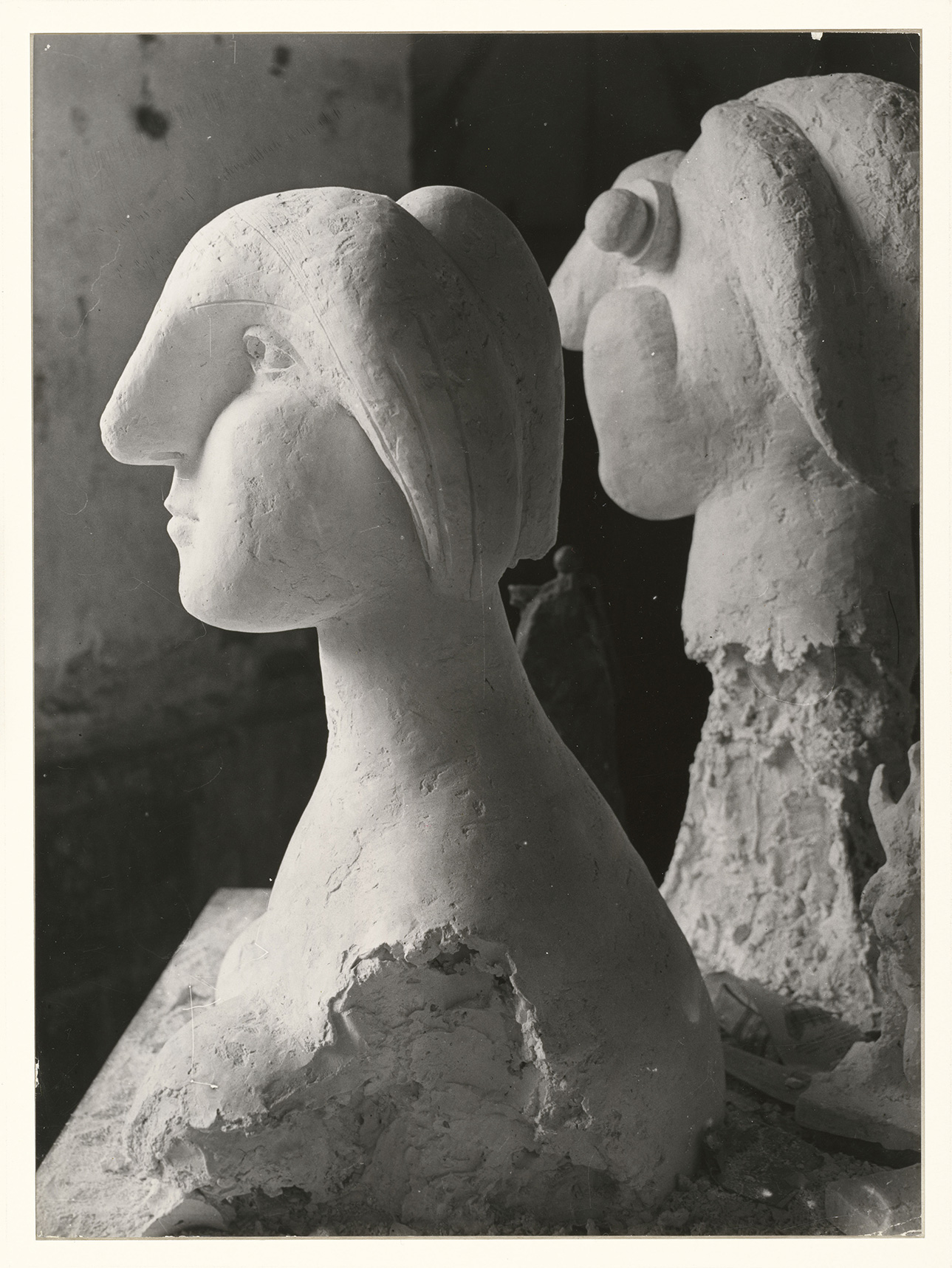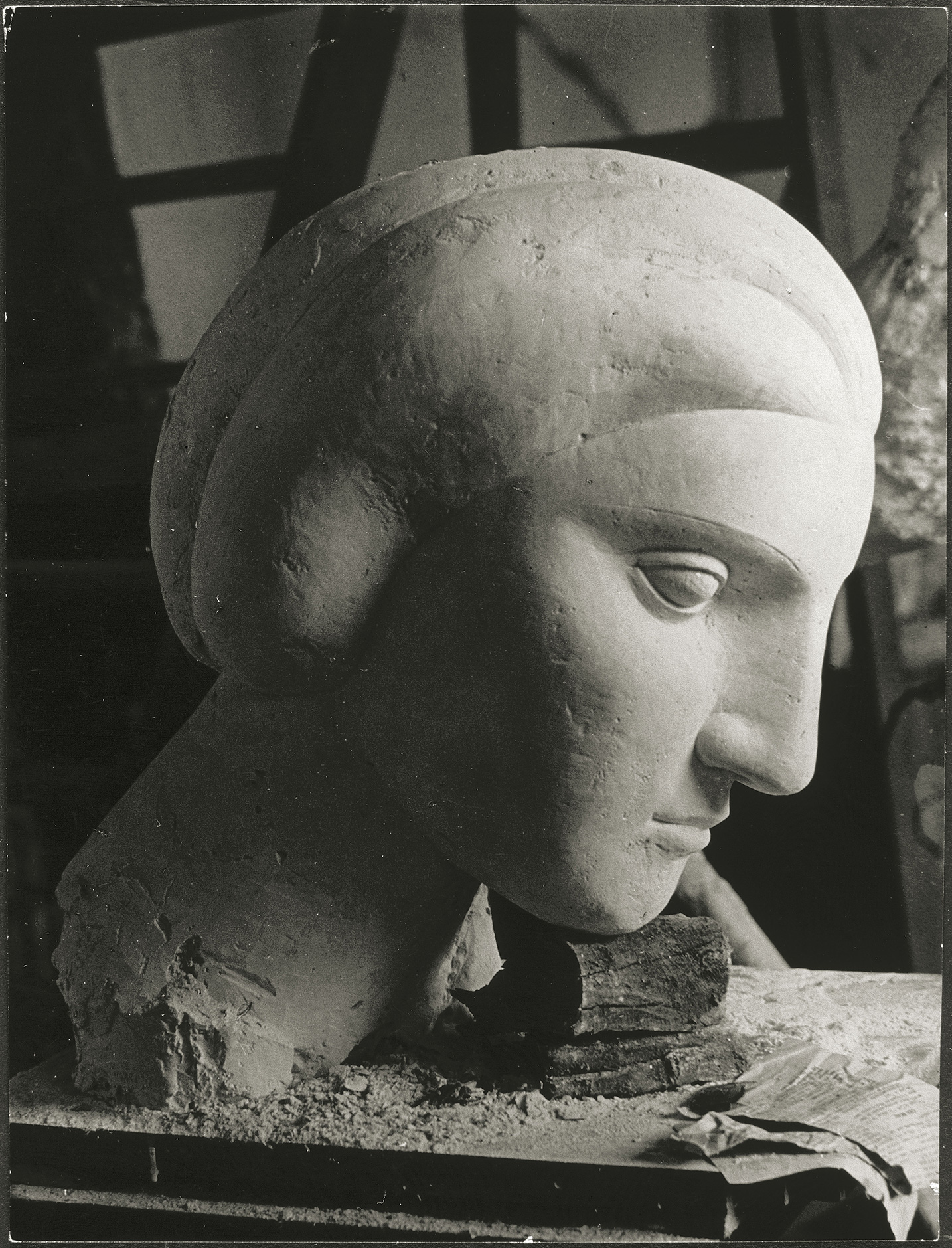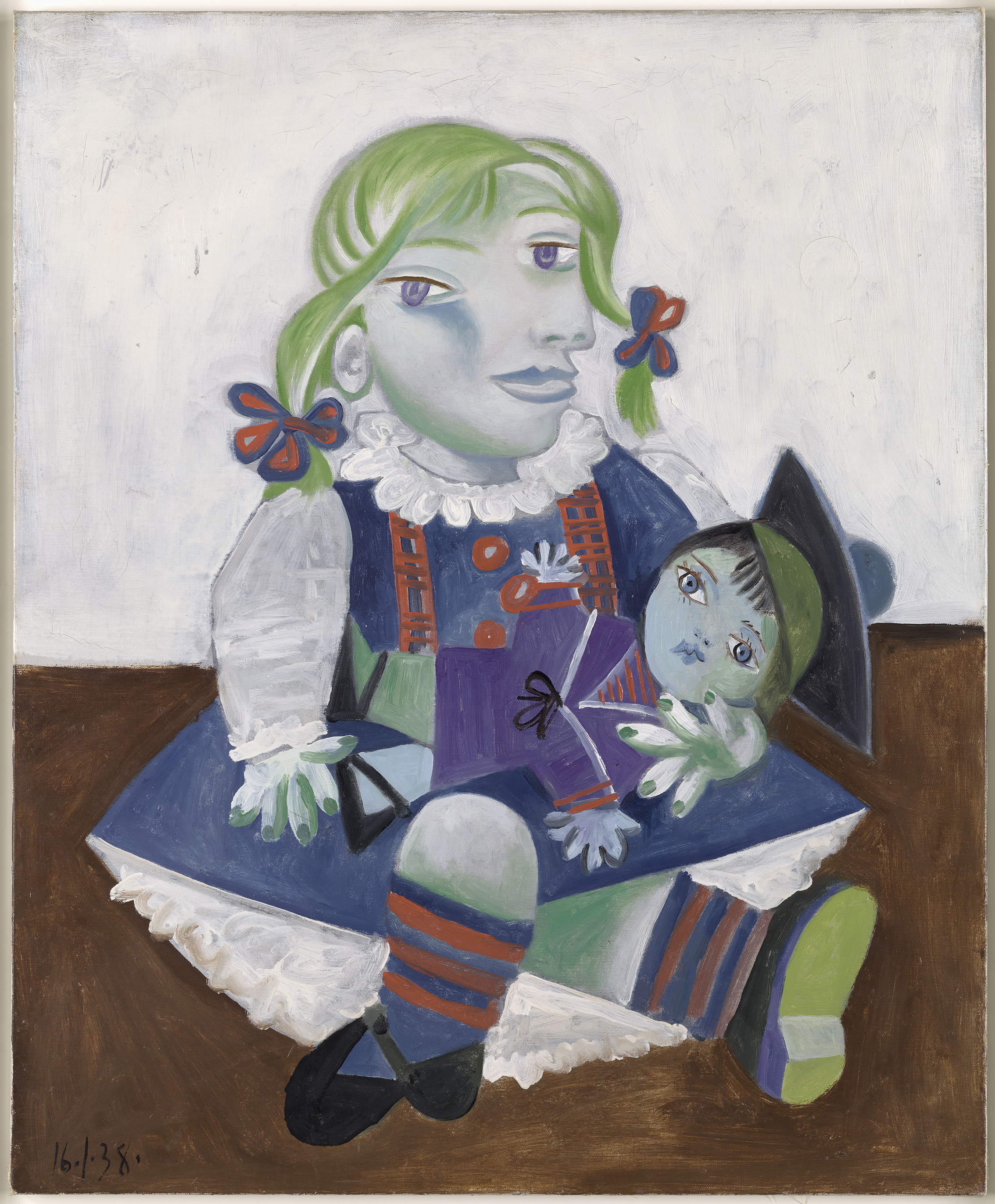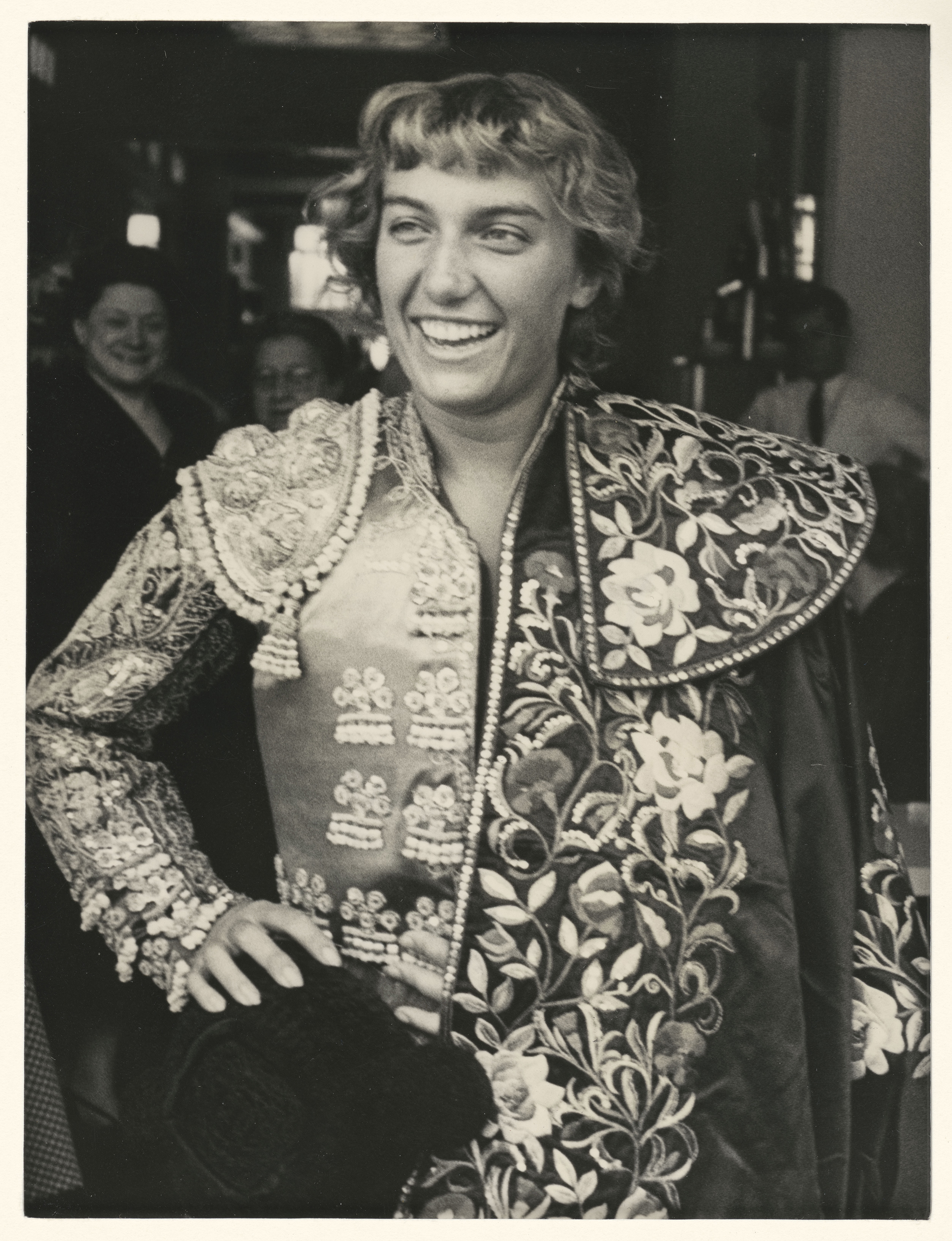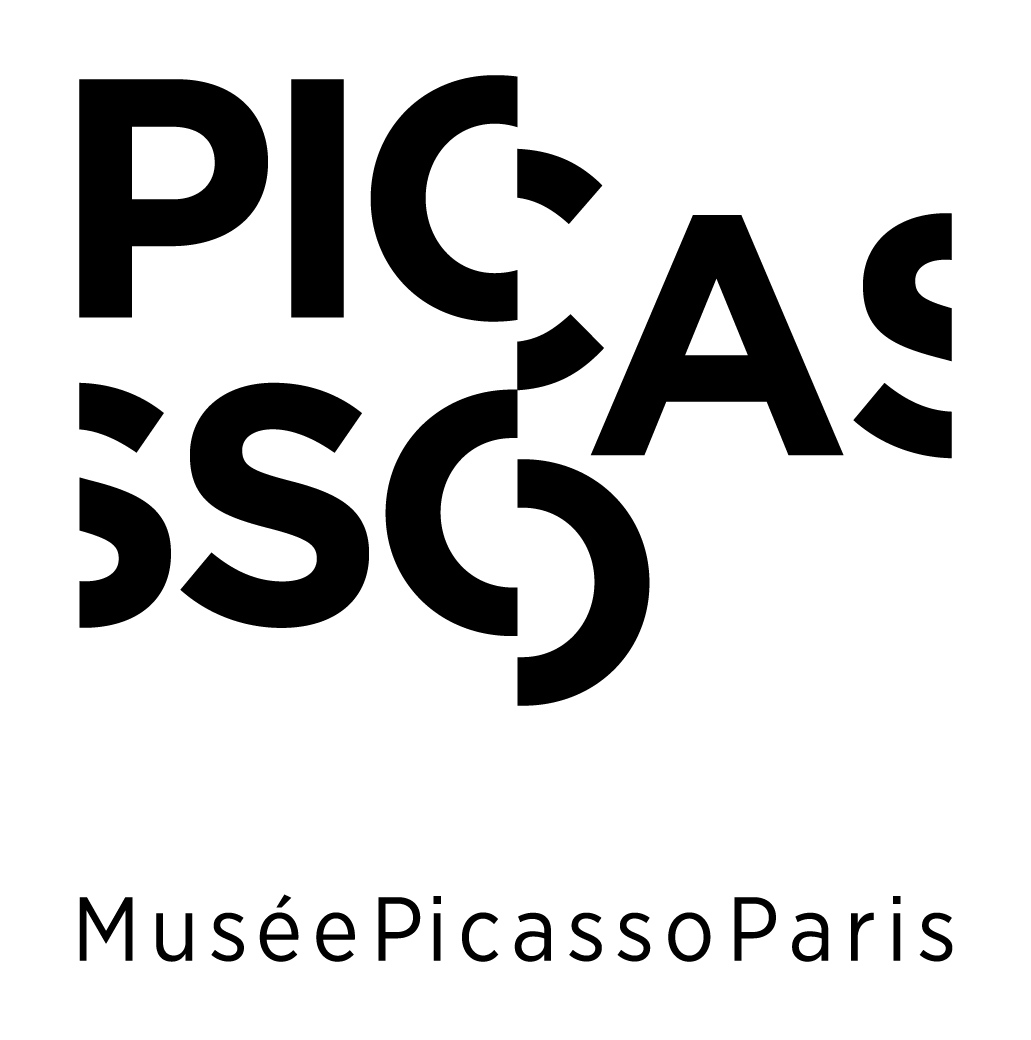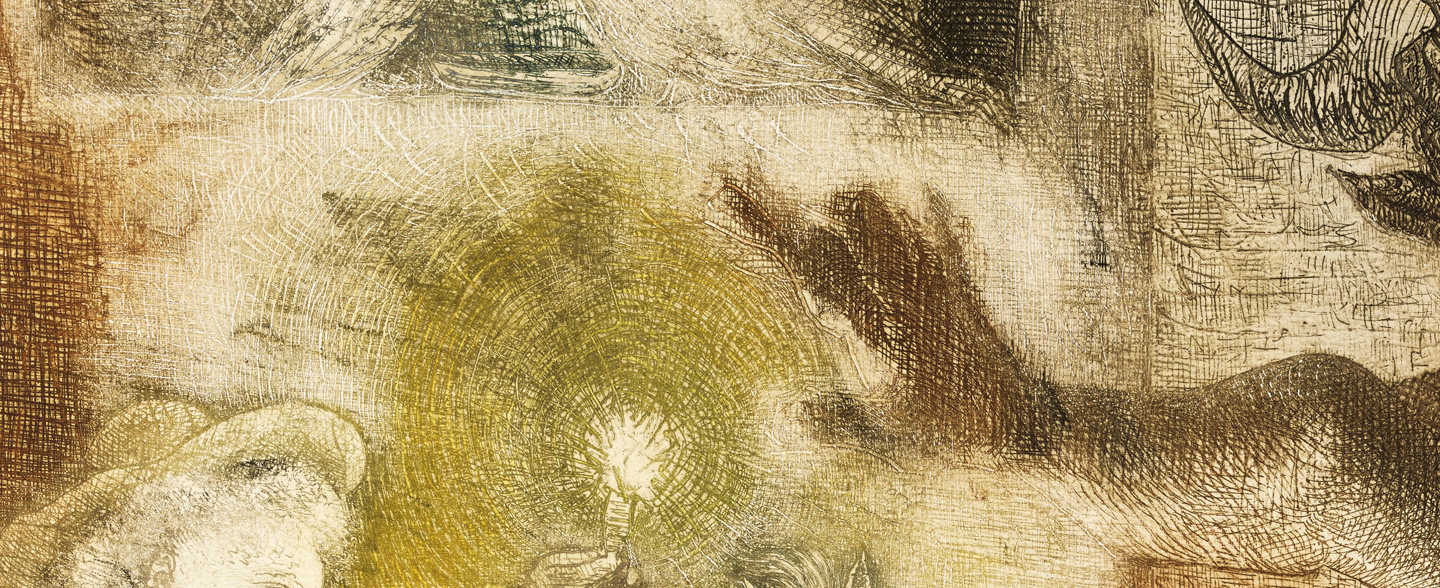But see these surrealists! How clever they are! They found that these drawings answered exactly to their abstract ideas.
Picasso's artistic style evolved considerably since his arrival in Paris in 1901. The blue and pink periods followed, then a pictorial revolution with cubism, sometimes going as far as abstraction. Picasso never stopped renewing his representation of reality. Following his collaboration with Diaghilev for the Russian ballet and influenced by Apollinaire, then André Breton, the artist gradually shifts to an art associated with surrealism beginning in 1924. What is the relationship between Picasso and the surrealist movement?
Surrealism
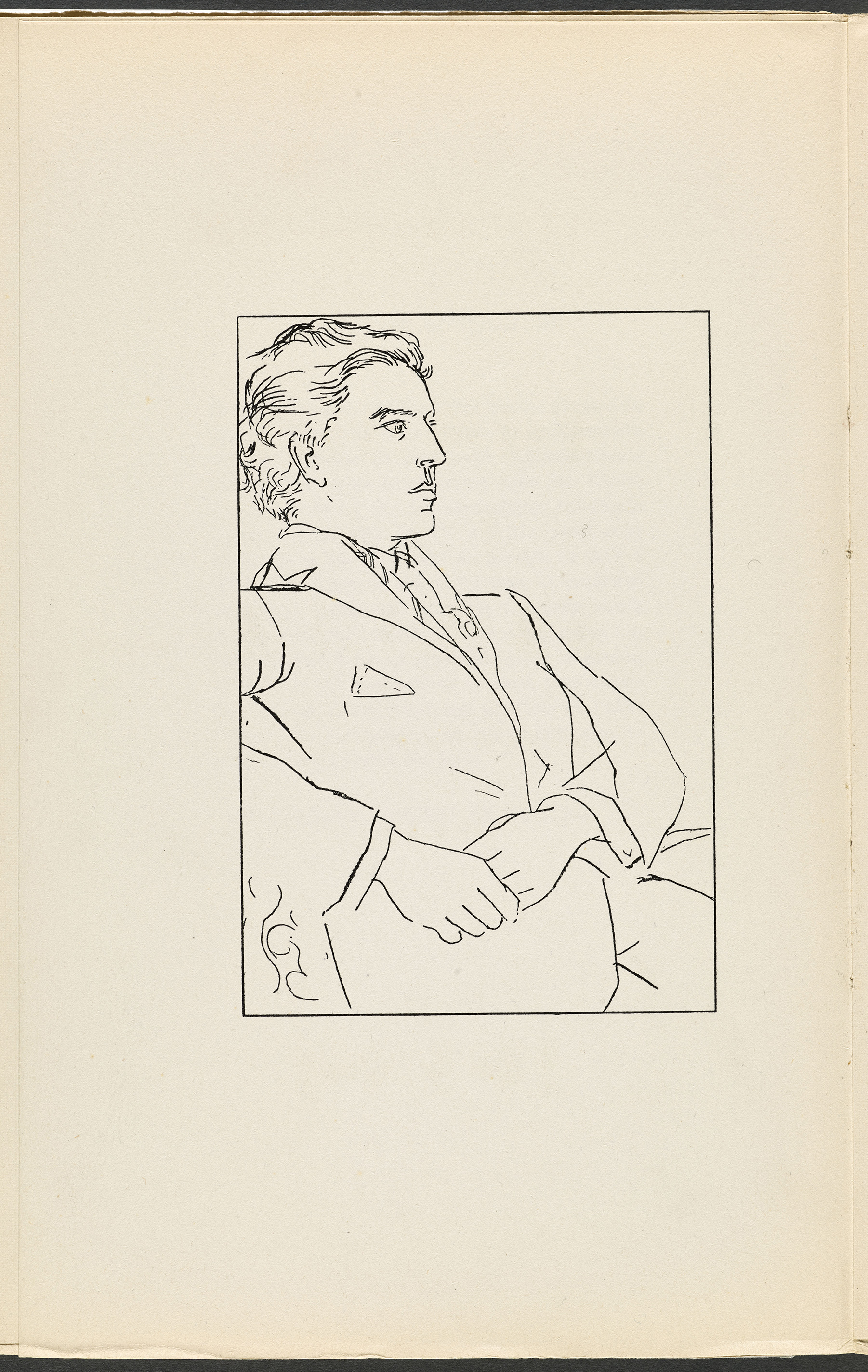
The support of the Surrealists
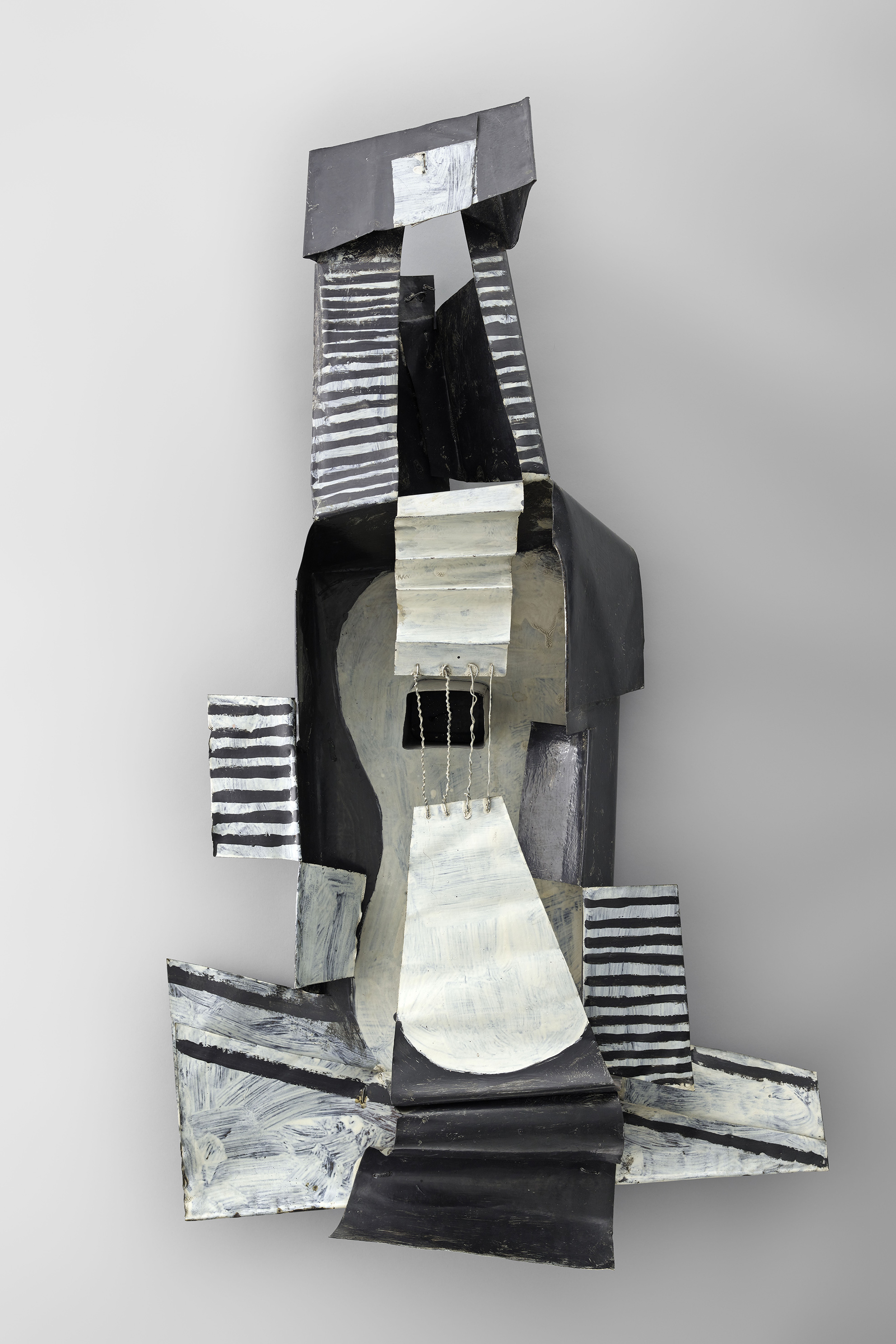
In 1924, Picasso produced large still lifes in a cubist and decorative vein. The painted metal construction "Guitar" marks a turning point. Indeed, it was reproduced that winter in the first issue of "La Révolution Surréaliste” and placed in parallel with a poetic text by Pierre Reverdy (1889-1960). Picasso's works were then regularly reproduced in the magazine.
That same year, after many exchanges and following a strong epistolary argument, André Breton and Louis Aragon persuaded the great collector Jacques Doucet to acquire "Les Demoiselles d'Avignon" for the modest sum of 25,000 francs (not very high for the time). The initial goal was to keep the painting in France, but the collector's wife sold it when her husband died. At the same time, Picasso worked on the ballet Mercury. In his preparatory drawings, he drew softer forms but was still influenced by Cubism. The ballet is badly perceived during the performances and in June 1924 a group of surrealists publishes" a "Tribute to Picasso" in the magazine "Paris-Journal” to mark their support. From 1925, "La Révolution Surréaliste n°2" reproduced two pages of abstract drawings from a notebook made in Juan-les-Pins the previous year. Number 4 of the same magazine presents "Les Demoiselles d'Avignon" for the first time. Breton published his essay entitled "Surrealism and Painting", abundantly illustrated with works by Picasso. Issue #5 will also reproduce works by the artist. Thus, the surrealist movement is often associated with the work of Picasso, who regularly illustrates these texts. The link is established through the magazine, carried and promoted by André Breton.
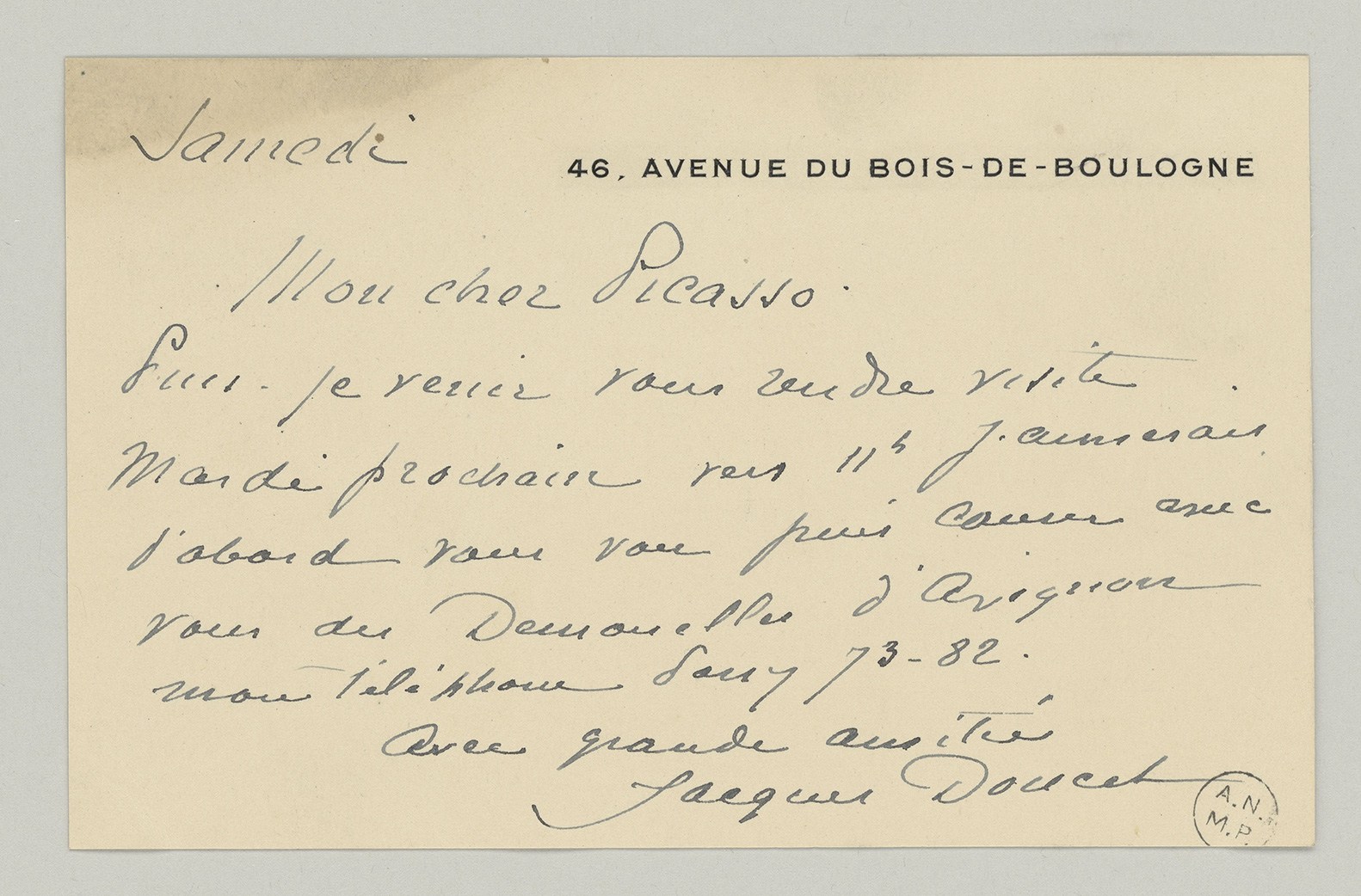
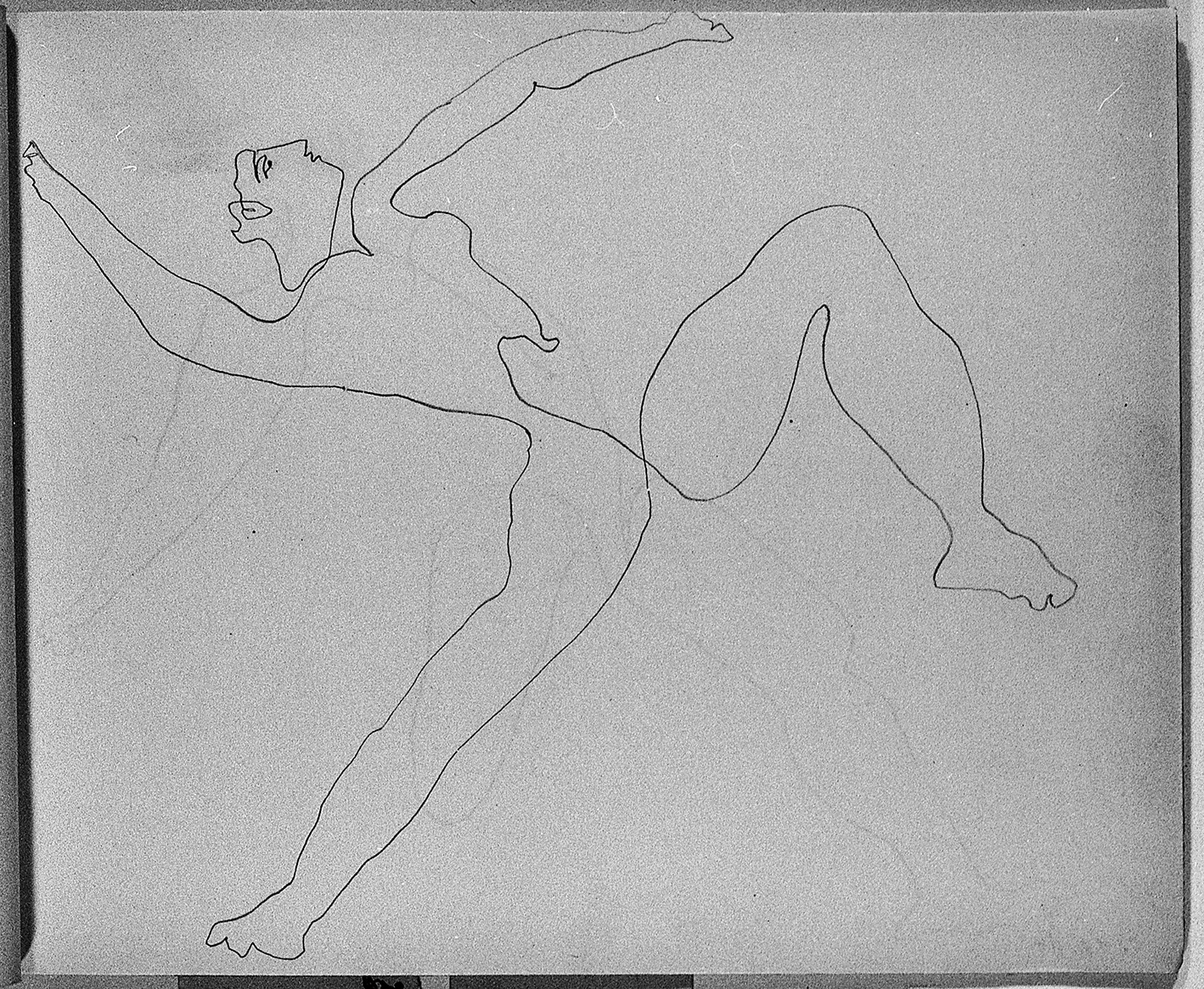
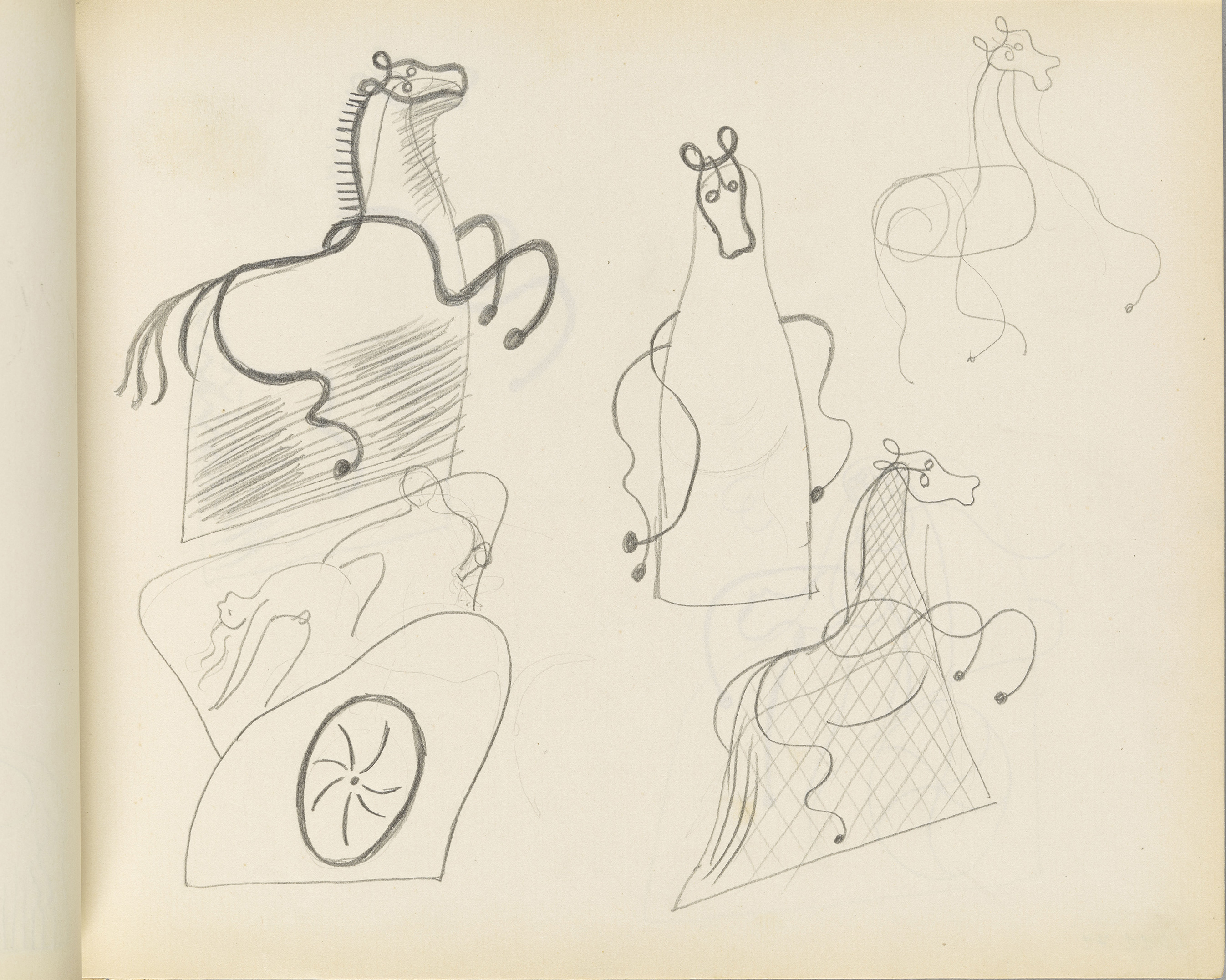
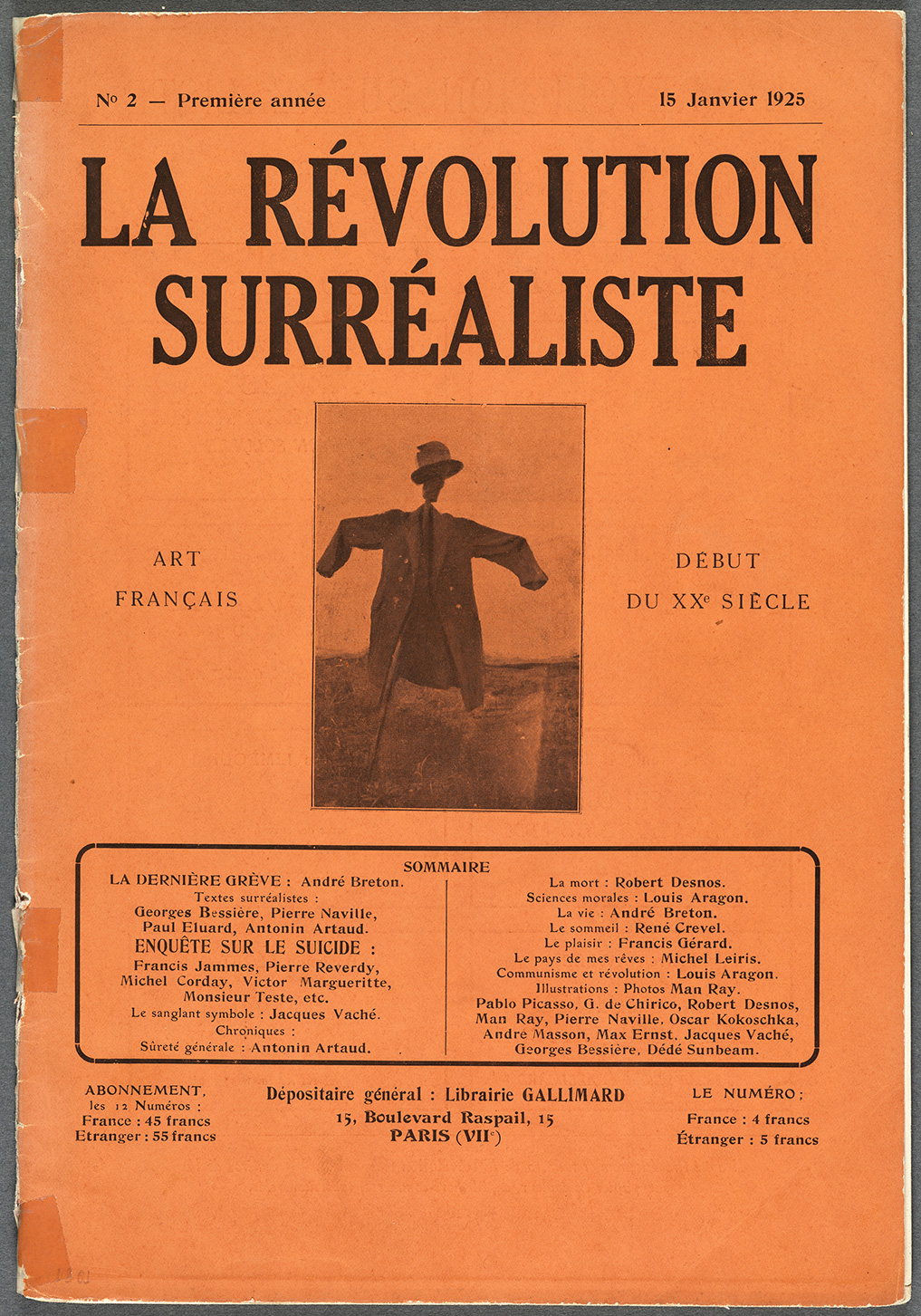
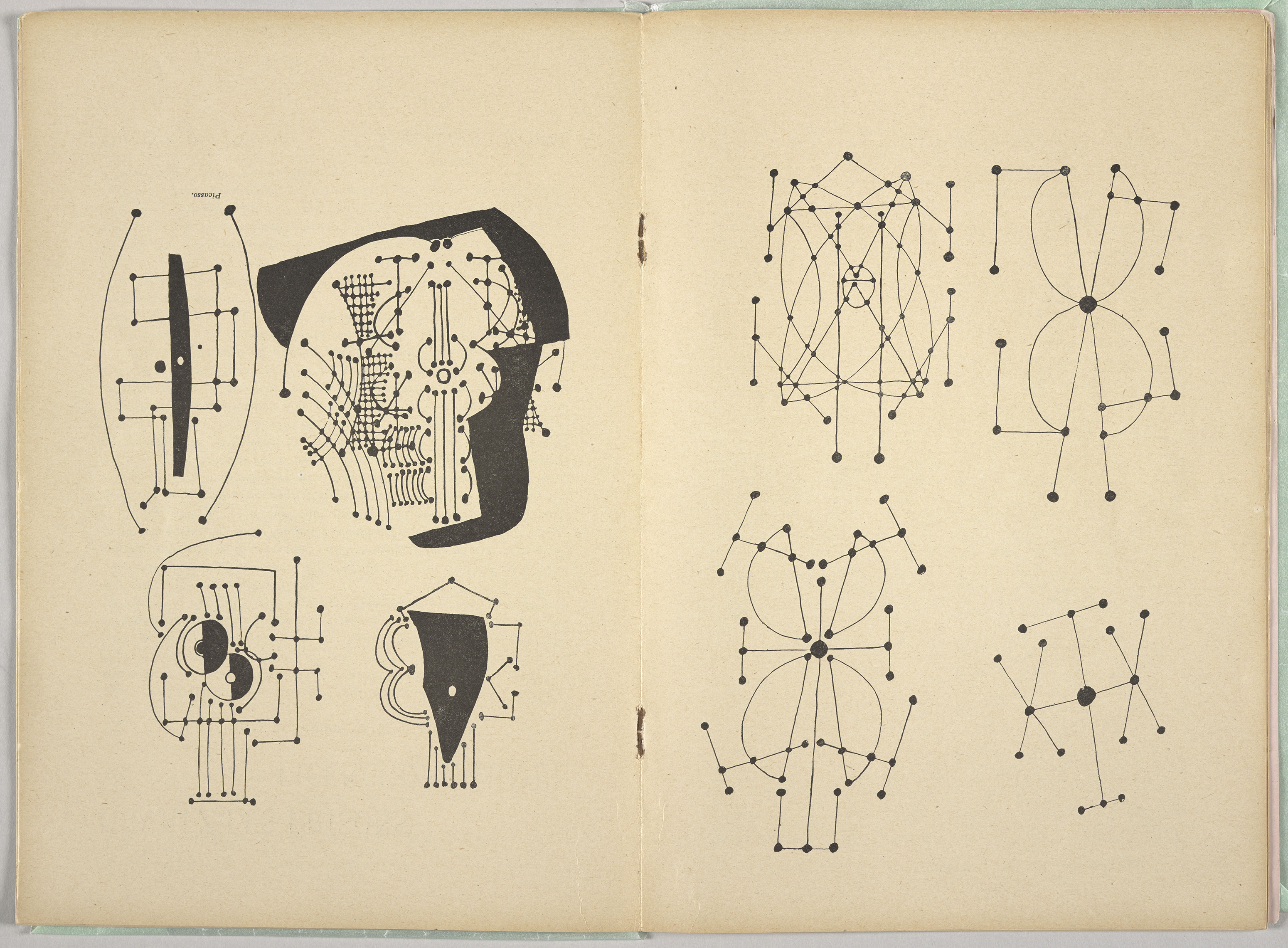
Picasso's participation in Surrealism
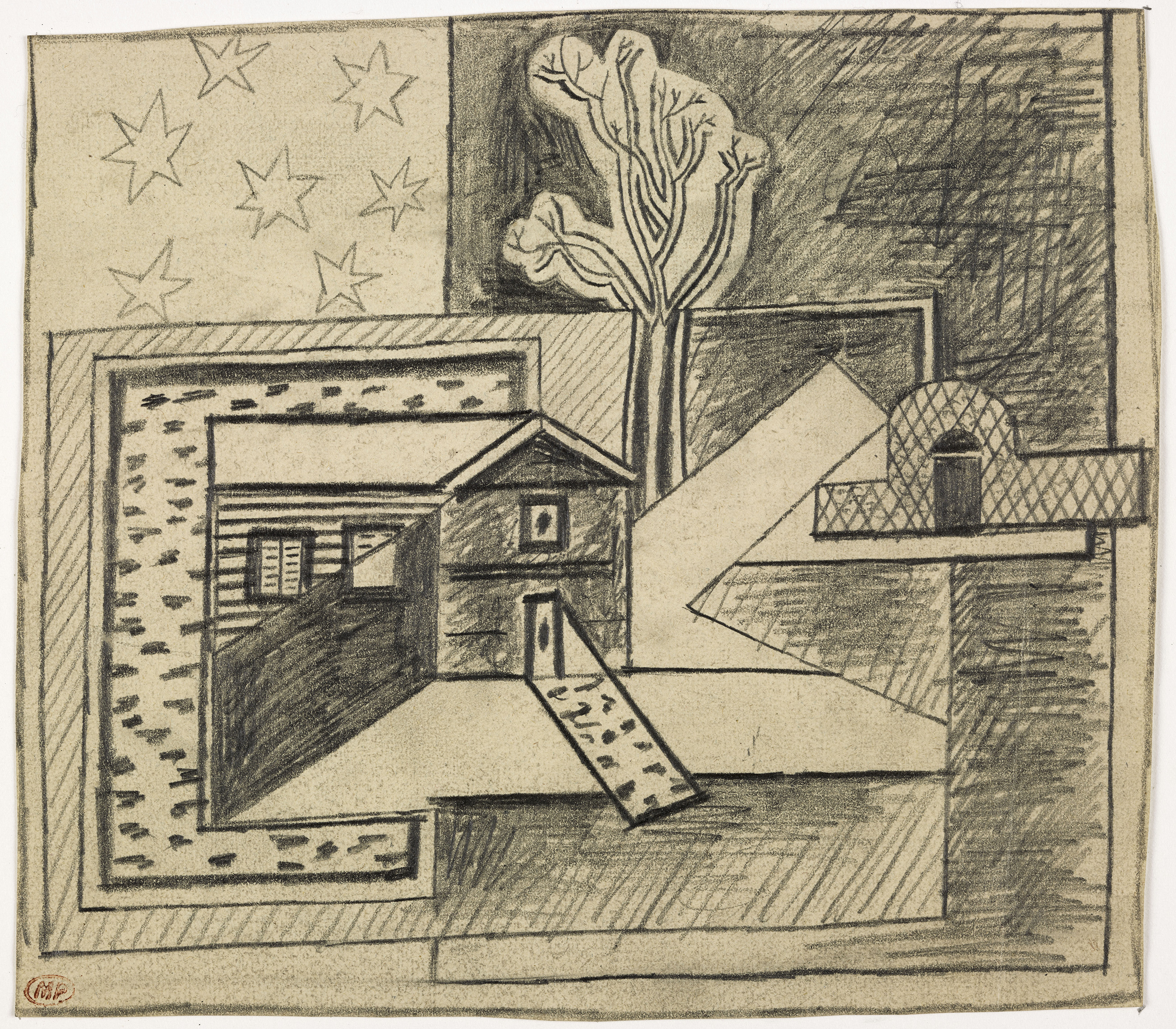
In 1925, Picasso "settles in" with the Surrealists. Indeed, on November 14, the exhibition La Peinture Surréaliste opened at the Galerie Pierre, 13 rue Bonaparte, in Paris, and he exhibited some of his works including "Noël, la neige", "Homme à la guitare" and "Tête de Femme".
Maurice Raynal, art critic for the magazine "L'Intransigeant", commented on the exhibition: "The father of cubism has become the adopted son of the surrealists!” In the collective unconscious, Picasso takes part in this way to the group of surrealists, even if he never claimed as such. It would be difficult to see in Picasso's works a confrontation between the two movements, but rather a connection, a superposition. In 1926, he made several "Guitar" assemblages of canvas, rope, glued paper, wallpaper, nails and hooks, all variations considered surrealist and based on a principle of Cubist construction.
During 1928, Picasso made iron sculptures in the studio of fellow Surrealist Julio González, which were projects for the monument to Apollinaire, who had died in 1918. Daniel Henry Kahnweiler, a collector and art dealer who had worked with Picasso for a long time, described them as "drawings in space". Following this, Picasso made a series of paintings where the classical themes of the large nudes are governed by strong colors and multiple distortions, as evidenced by "The Large Nude in the Red Armchair", made in 1929.
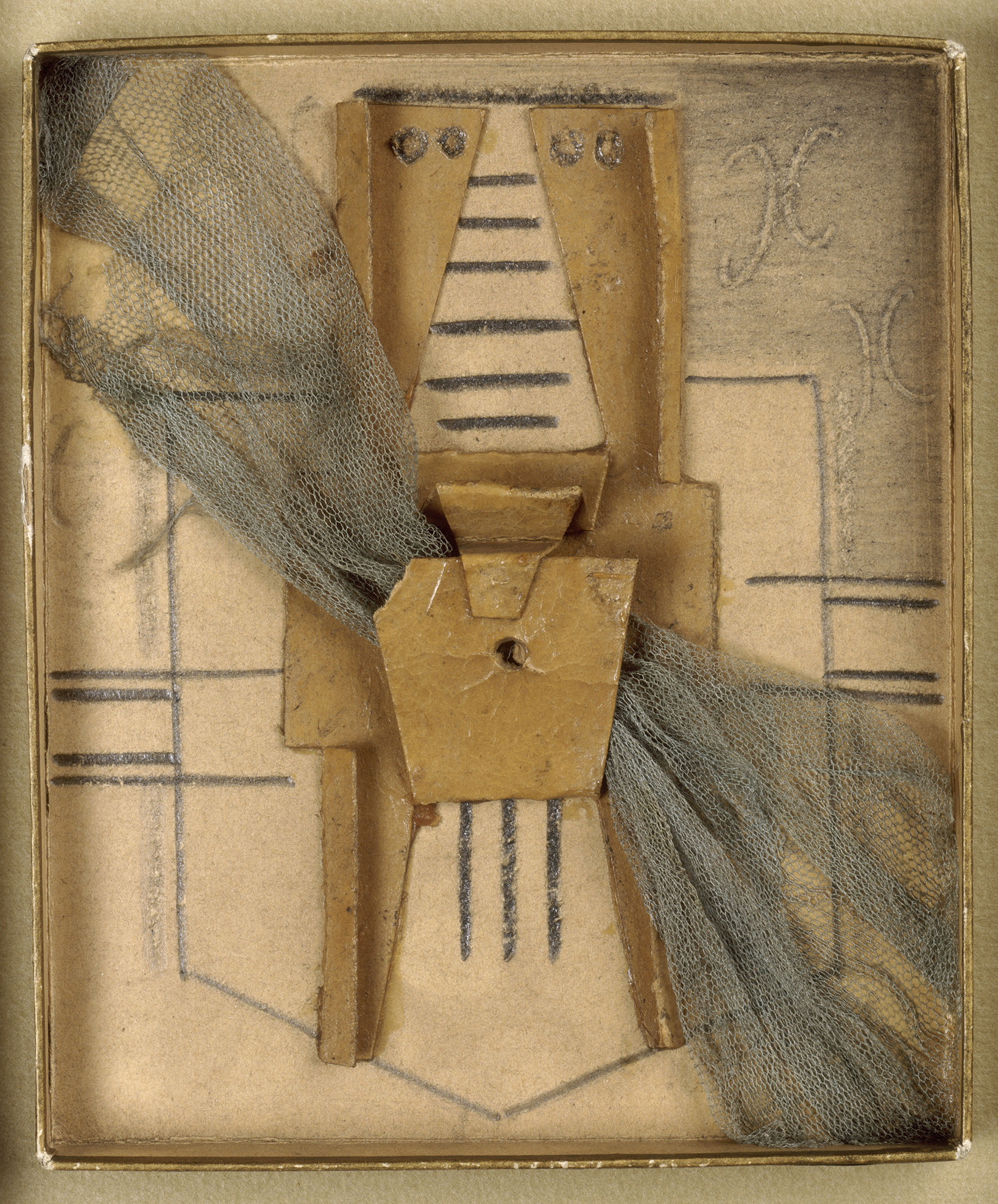
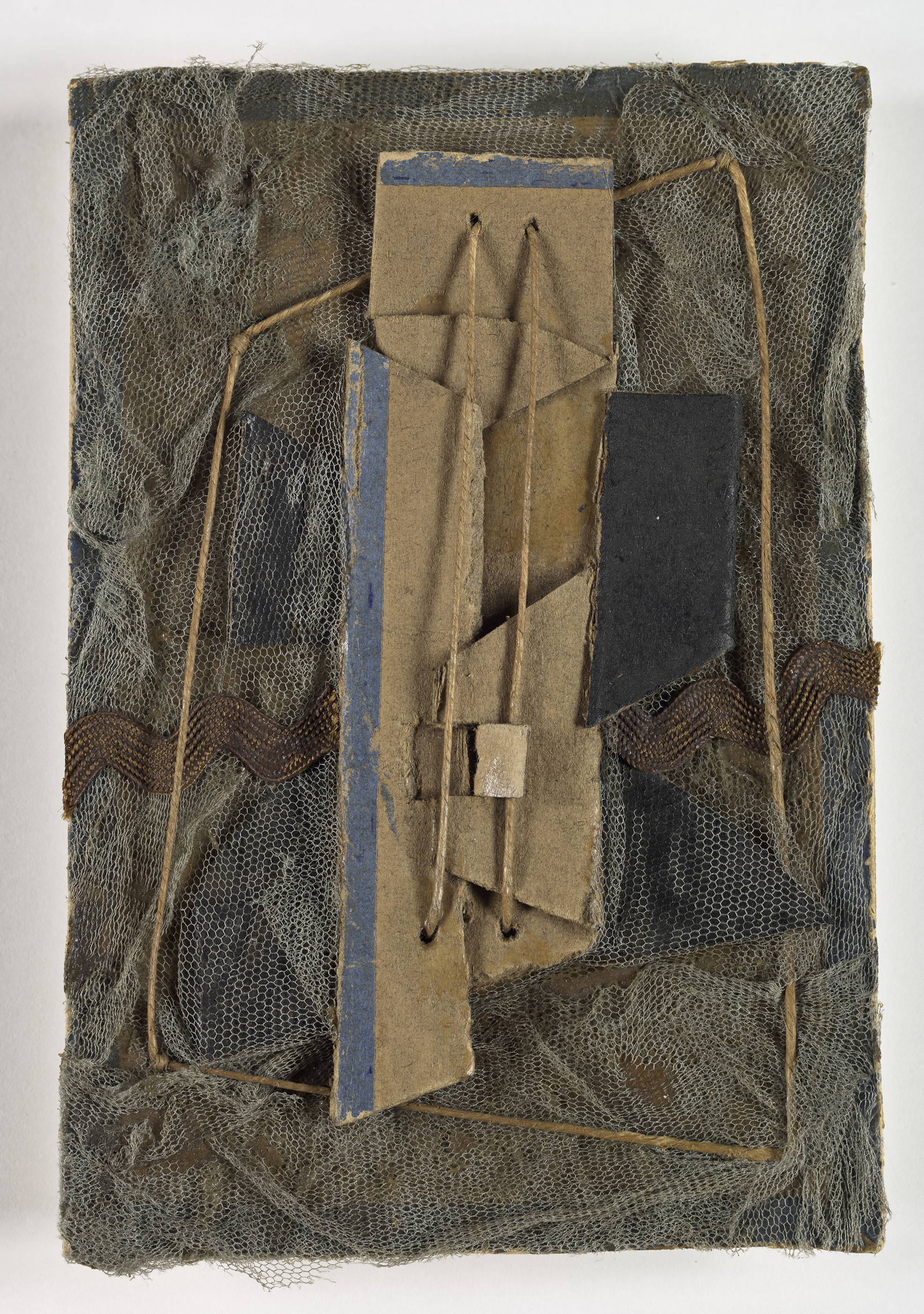
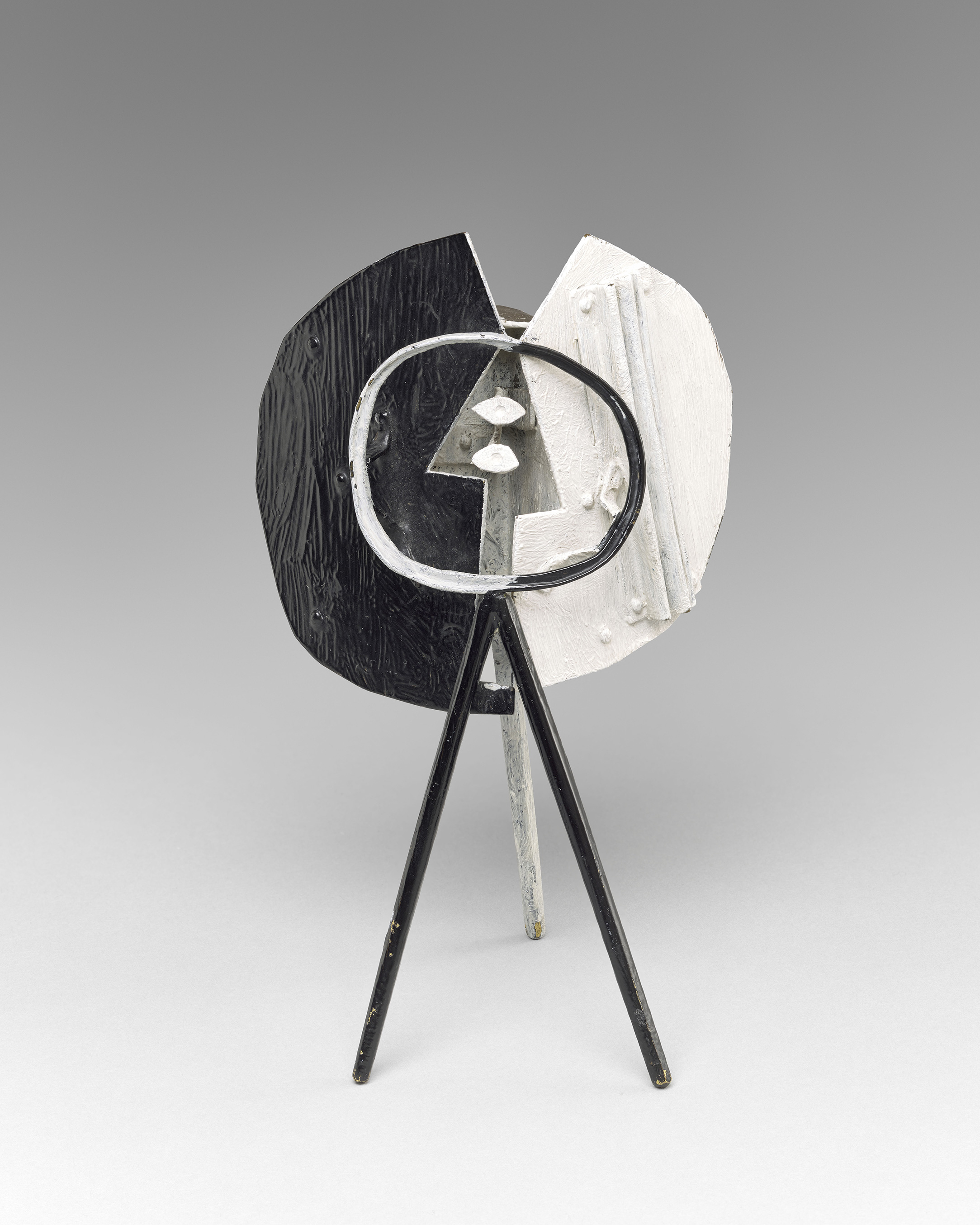
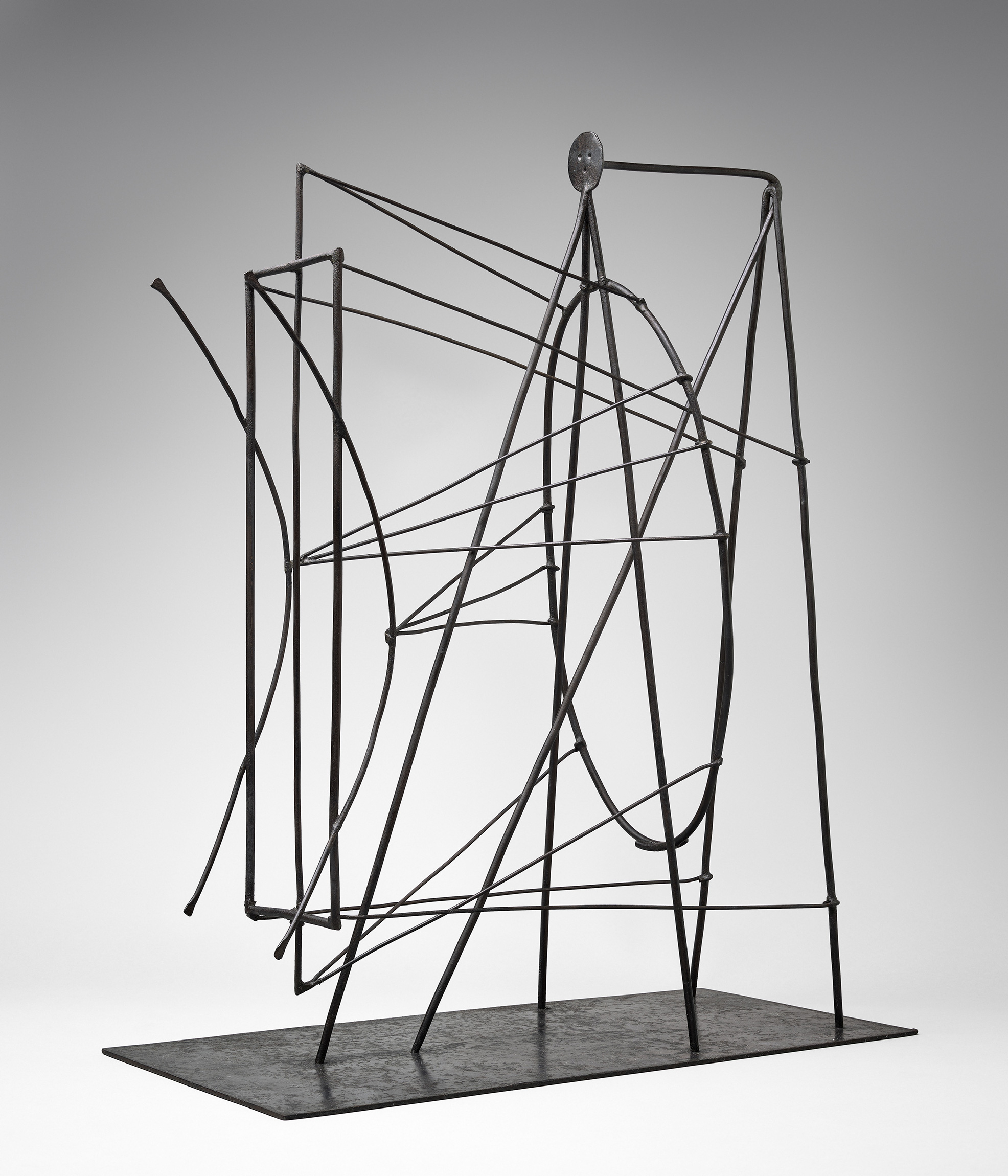
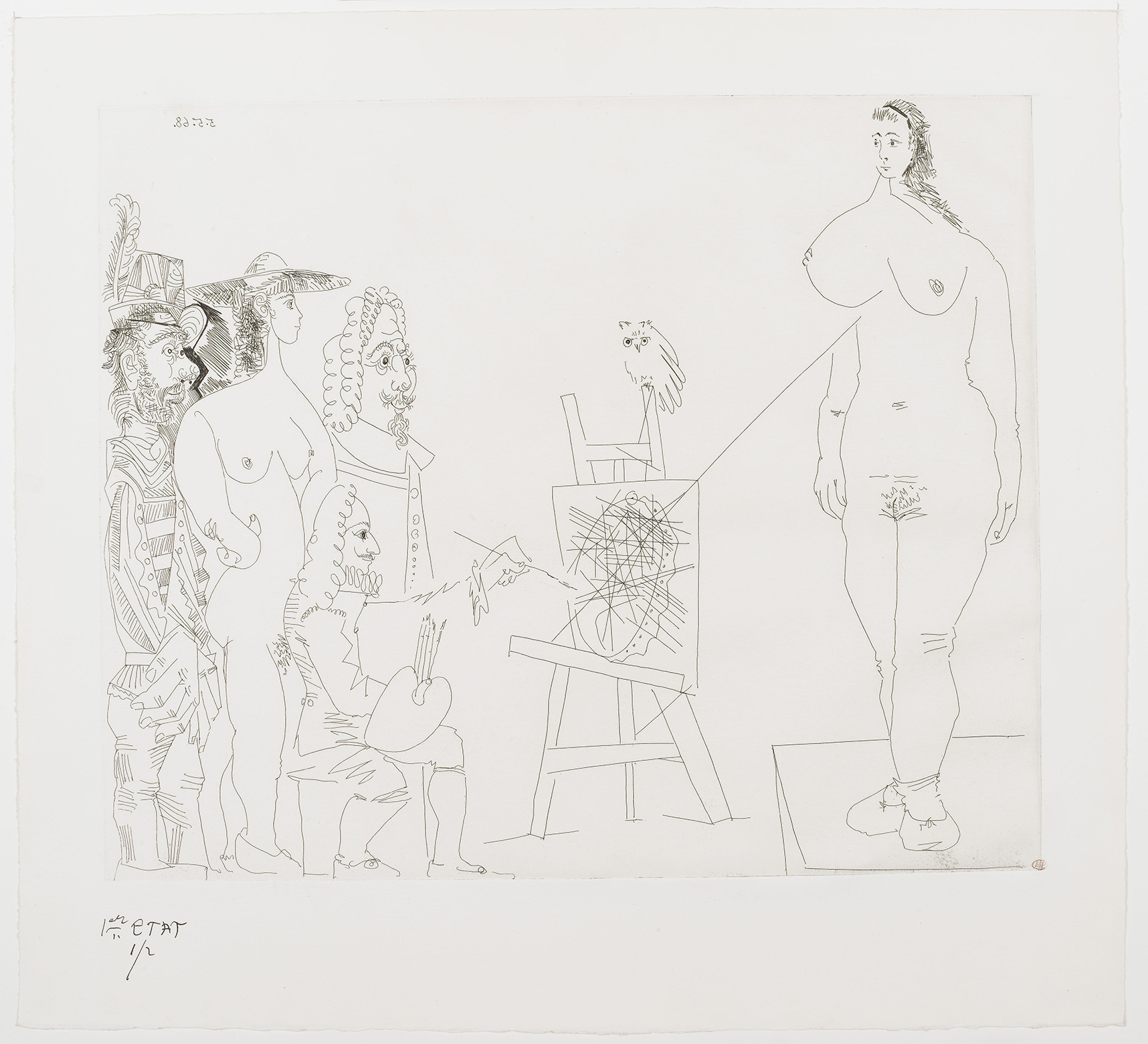
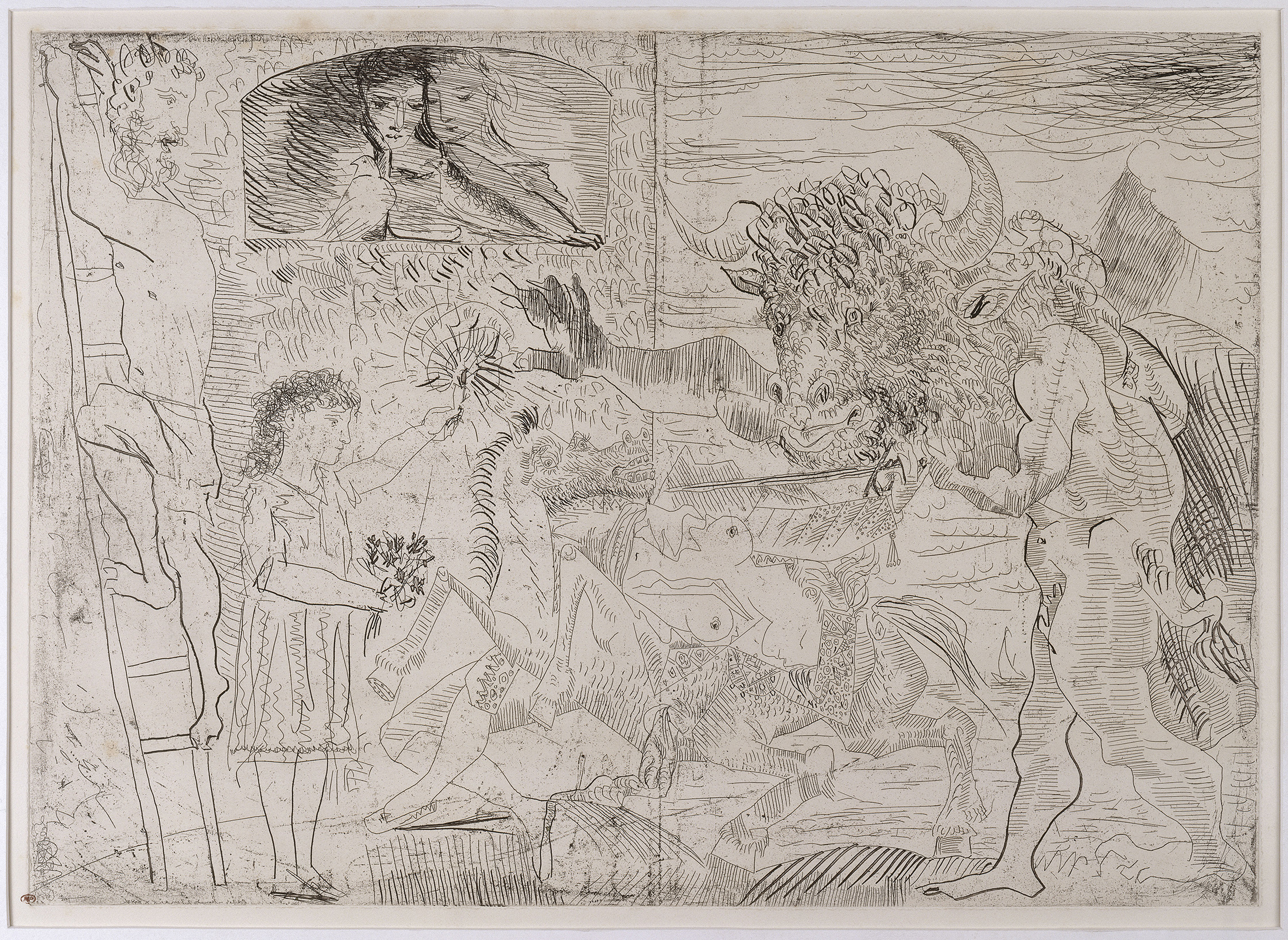
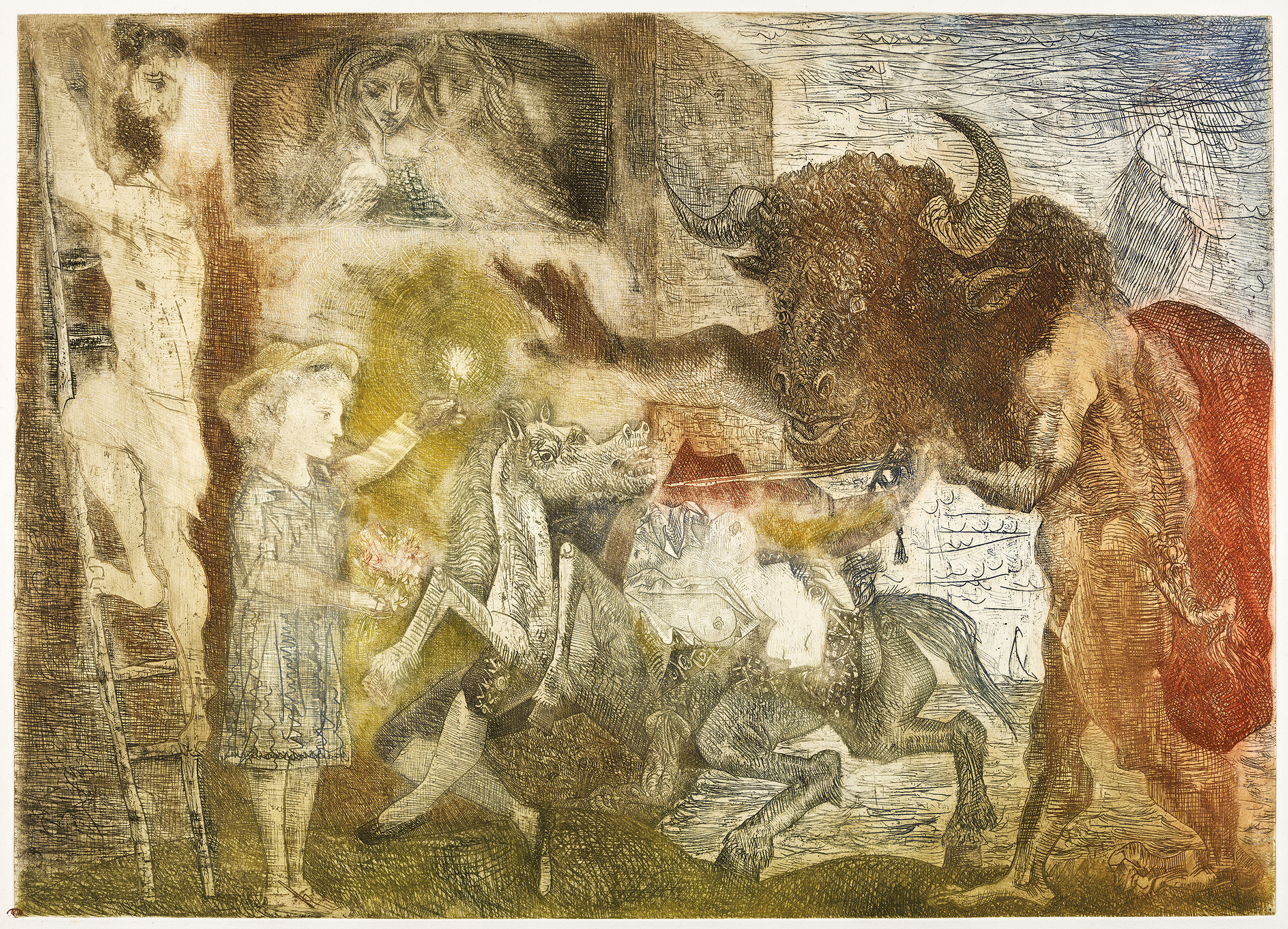
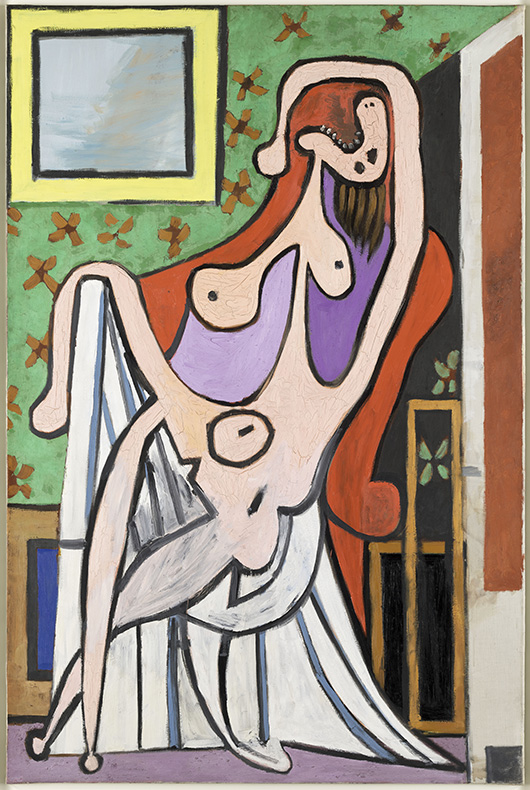
From Vollard to Teriade: The figure of the Minotaur
The theme of ancient mythology appears at this time in the work of Pablo Picasso. The first representation of the figure of the Minotaur dates from 1928. During the summer of 1931, which he spent in Juan-les-Pins, he initiated a series of engravings for the "Suite Vollard", a commission from his art dealer and publisher Ambroise Vollard. This suite features the artist in his studio, as well as the figure of the Minotaur, which Picasso represents as a mise en abyme of himself, with Marie-Therese in the role of model of the painter. In the fall, mythology reappeared in Picasso's work with the illustration of Ovid's Metamorphoses, edited by Albert Skira. Skira, a publisher specializing in books and art magazines, regularly called on various artists of the time to illustrate its works. The painter thus devoted himself to illustrated books. For the publication of Honoré de Balzac's "Unknown Masterpiece", Vollard commissioned thirteen etchings. Beyond Picasso, it is the surrealist movement reinvested the myth of the "Minotaur", as evidenced by the magazine itself called Minotaur. Initiated by another publisher and Greek art critic, Tériade, it convenes many artists affiliated with surrealism, including Picasso, who collaborates with him.

The Minotauromachy
In 1933 he made a collage for one of the first covers. The joint publication of numbers 1 and 2 of the magazine, includes an article by André Breton: "Picasso in his element". Regularly, "Minotaure" will publish articles on Picasso, often written by Tériade himself. The theme of the Minotaur never left Picasso, who used it in his series of engravings called "La Minotauromachie" in 1935. The figure of the ancient monster is closely followed by the reappearance of the theme of the bullfight, a dear and recurring subject in the work of Picasso, who since childhood, is fascinated by this part of Spanish culture, and more broadly Mediterranean.


Marie-Thérèse Walter (1909-1977)
Picasso met Marie-Thérèse, while she was walking with her sister on the Boulevard Haussmann, in front of the Lafayette Galleries. The painter fell instantly under the spell of the young girl. Being still married to Olga Kokhlova, they had to hide their relationship, especially since Marie-Thérèse was a minor at the time of their meeting. Picasso bought the Château de Boisgeloup near Gisors, where he set up his sculpture studio in 1930. He then secretly moved Marie-Thérèse to 44 rue La Boétie in Paris. A year later, at Boisgeloup, he began the series of "Heads" and "Busts of Women", in plaster, which are variations on the face of Marie-Thérèse. The representation of Marie-Thérèse fascinated Picasso, who never stopped depicting her in various ways, both as a goddess in his mythological illustrations, and as an inspiring muse. In 1935, Picasso separated from Olga, but the couple renounced divorce. On September 5 of that year, Maria de la Concepción, nicknamed Maya, was born, the daughter of Pablo and Maria Teresa, to whom Picasso would remain very close throughout his life.
